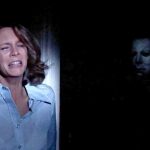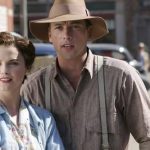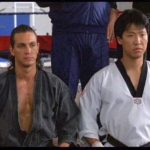The Godfather Part II (1974)
- tranthuthuy
- October 13, 2024

“The Godfather Part II,” released in 1974, is a cinematic masterpiece directed by Francis Ford Coppola, based on the novel by Mario Puzo. Serving as both a sequel and a prequel to the iconic “The Godfather” (1972), this film deepens the exploration of the Corleone family saga, delving into themes of power, betrayal, and the complexities of familial loyalty. Widely regarded as one of the greatest films in cinematic history, “The Godfather Part II” expertly intertwines two narratives that examine the rise of Michael Corleone (Al Pacino) in the 1950s alongside the early life of his father, Vito Corleone (Robert De Niro), in the early 20th century.
The film is structured with a dual narrative, juxtaposing Michael’s consolidation of power in the criminal underworld with Vito’s immigrant origins and ascent in New York City. This clever storytelling technique not only adds depth to the characters but also highlights the stark contrasts between the two generations. While Vito’s journey is marked by a sense of morality and a desire to protect his family, Michael’s path is increasingly defined by ruthlessness and isolation.
Vito Corleone’s story is set in the early 1900s, showcasing his transformation from a Sicilian immigrant to a powerful mafia boss. Robert De Niro delivers a captivating performance, capturing Vito’s charisma, wisdom, and the complexities of his character. Through flashbacks, we witness Vito’s struggles as he navigates a world filled with prejudice and violence, ultimately establishing a criminal empire based on loyalty and respect. This narrative arc not only serves to humanize Vito but also sets the stage for Michael’s later choices, illustrating the generational cycle of power and its consequences.
In contrast, Michael Corleone’s story unfolds in the 1950s as he attempts to expand the family business while grappling with the burdens of leadership. Al Pacino’s portrayal of Michael is both compelling and tragic, as he embodies a man increasingly consumed by his ambitions and the weight of his decisions. As Michael seeks to legitimize the family’s operations, he becomes increasingly paranoid, leading to a series of betrayals that alienate him from his loved ones. This descent into darkness is marked by a pivotal scene in which Michael orders the assassination of his brother Fredo (John Cazale), a heart-wrenching moment that encapsulates the film’s exploration of betrayal and loyalty.

The cinematography in “The Godfather Part II” is striking, employing a rich visual palette that enhances the film’s emotional resonance. Gordon Willis, the director of photography, utilizes shadows and lighting to create a sense of foreboding, particularly in scenes involving Michael’s decisions. The iconic imagery, coupled with a haunting score by Nino Rota, contributes to the film’s overall atmosphere of tension and inevitability.
The film’s exploration of power dynamics is particularly noteworthy. Michael’s interactions with rival crime families, government officials, and even his own family highlight the precarious balance of power within the criminal underworld. As Michael becomes more entrenched in his role as the Godfather, he faces challenges that test his resolve and moral compass. His transformation from a reluctant leader to a ruthless figure is emblematic of the corrupting influence of power, a central theme that resonates throughout the film.

One of the film’s most compelling aspects is its portrayal of family dynamics. The relationship between Michael and his father is pivotal, as Vito’s legacy looms large over Michael’s choices. Michael’s attempts to live up to his father’s ideals often clash with his own ambitions, leading to a tragic conflict that ultimately shapes the family’s fate. The film raises questions about the nature of loyalty and the sacrifices that come with power, making it a poignant exploration of the human experience.
In addition to its rich storytelling and character development, “The Godfather Part II” is notable for its nuanced portrayal of women. Characters like Kay Adams (Diane Keaton) and Connie Corleone (Talia Shire) navigate the complexities of a male-dominated world, providing a counterpoint to the film’s exploration of power. Kay’s struggle to reconcile her love for Michael with the realities of his life in the mafia adds emotional depth to the narrative, highlighting the personal costs of his choices.

The climax of the film serves as a powerful culmination of the themes explored throughout. The confrontation between Michael and Fredo is not only a personal tragedy but also a reflection of the broader themes of betrayal and the cyclical nature of violence. This emotional climax leaves viewers grappling with the implications of family loyalty and the consequences of power.
In conclusion, “The Godfather Part II” is a remarkable film that transcends its genre to become a profound exploration of power, family, and betrayal. With its dual narrative structure, rich character development, and stunning cinematography, the film captivates audiences while delving into the complexities of the human condition. Francis Ford Coppola’s masterful direction, combined with outstanding performances from Al Pacino, Robert De Niro, and the ensemble cast, solidifies its place as one of the greatest films in cinematic history. “The Godfather Part II” is not only a continuation of the Corleone saga but also a timeless reflection on the cost of ambition and the inescapable ties of family.
Suggested videos for you:
Suggested videos for you:
Suggested videos for you:











